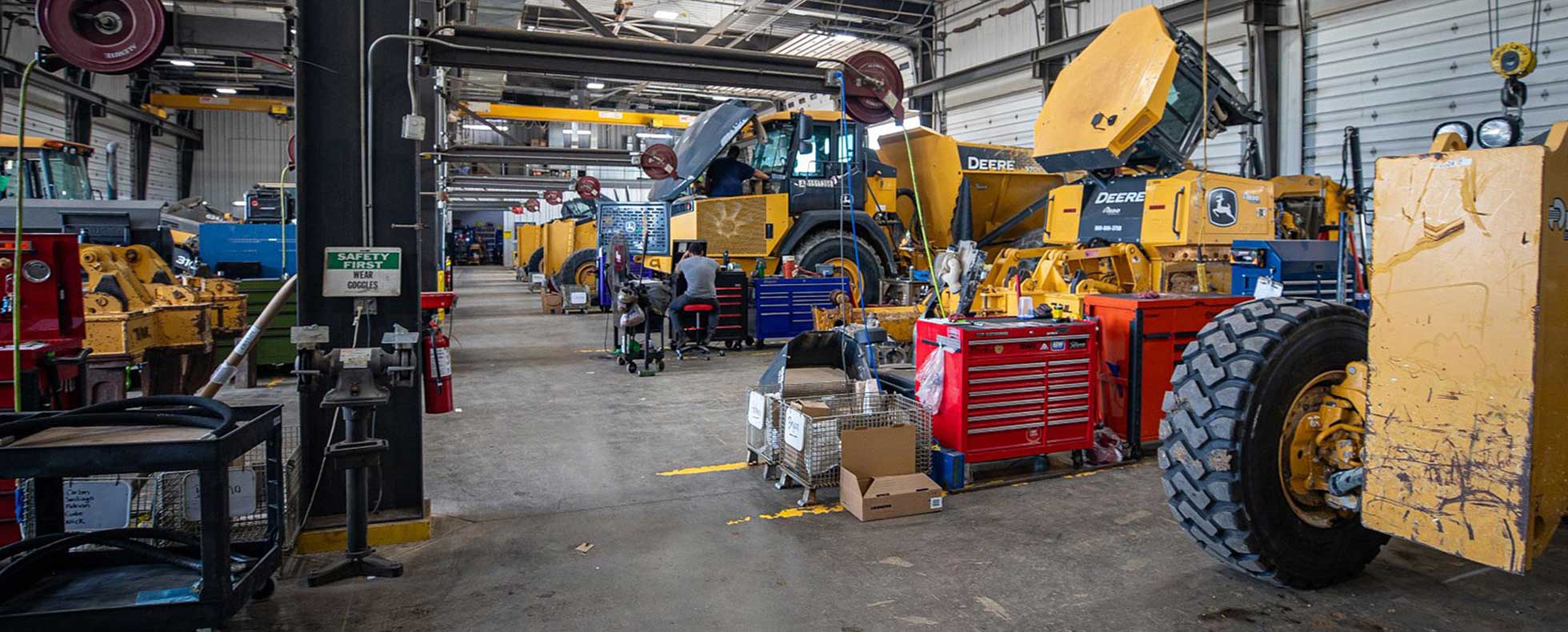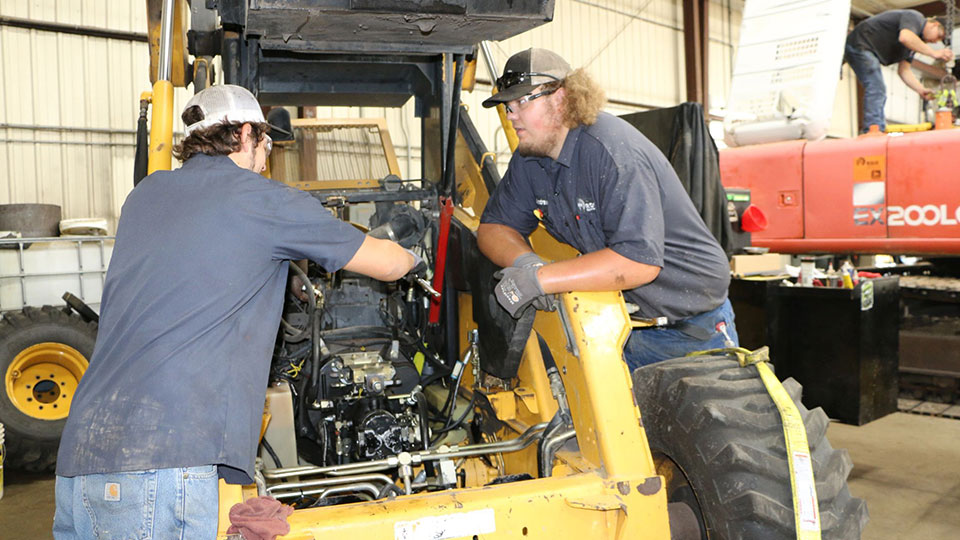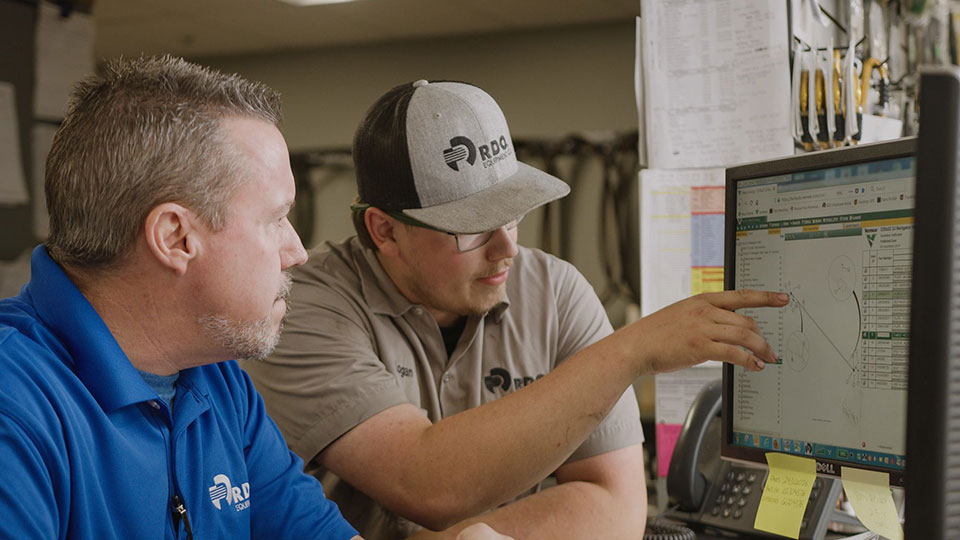
Safety is an important part of every business. Companies want their team members to feel comfortable and safe at work. That’s a given.
In the heavy equipment industry, however, safety is non-negotiable.
Service technicians spend their days working on high-powered, complex and dangerous machinery. It’s up to their companies — through internal procedures, regular training and ongoing evaluation — to reduce (and eliminate) the risks they face.
You understand the importance of safety protocols, equipment and practices. That’s why you’re looking for a company that takes these things seriously.
RDO Equipment Co. employs more than 1,000 full-time service technicians across our organization. These people are the bedrock of our company and make a true impact on our success.
The safety of our team members and everyone working alongside them is a foundational piece of our culture. As you search for your next employer, you want to be confident that you’ll be safe and secure at work.
This article will outline 10 major things we do at RDO to promote a safe working environment for service technicians.
Personal protective equipment (PPE) is a line of defense for technicians. At RDO, if PPE is required for your job, we will either provide it or help you acquire it.
Your specific PPE will vary based on your work environment (field technicians, for example, are given a satellite GPS system).
The PPE we provide or assist techs with getting includes:
Beyond supplying PPE, RDO shop leaders create consistency in properly wearing, cleaning, storing, maintaining and training on their use.
Safety is present across our organization — more than 80 dealership locations in 12 states — and is top of mind for every service team. Each store runs its own safety committee who meet regularly to discuss safety metrics, protocols, areas of risk and places where safety can be improved.
Although these are hosted and organized at the store level, the safety committees are given full backing by our organization.
In that way, these committees can impact the safety of their environment, whether that means bringing in third-party speakers or implementing additional safety methods. The minutes of these safety meetings are recorded and published.
Each month, RDO hosts a company-wide virtual safety meeting. This includes all local management from RDO’s service and parts teams — service managers, service operations managers, parts managers, etc.
These meetings start with a recap of the topics covered in the previous month’s call before jumping into that month’s discussion.
Although the content covered changes each month, here are some things we discuss during our company-wide safety calls:
Each of these monthly safety meetings lasts 25-45 minutes and allows time for team members to ask questions. When finished, every RDO employee can access the recording of the meeting (and all previous meetings) online.

RDO’s safety department, which has grown substantially over the years, is dedicated to producing regular safety fact/tip sheets. These are typically published every day and cover a specific safety topic.
Examples of topics include:
These daily tips keep safety at the top of our service technicians' minds and can be accessed in the safety section of our internal website.
Regularly, individual shop leaders host meetings where safety is a top discussion point. Together with their teams, each RDO service department reviews safety metrics (see below) and talks about areas of focus for the week ahead. This is a great opportunity for service technicians to bring up their own safety concerns and ideas for improvement.
Often, shop leaders use one of the daily safety tips/topics as a starting point for these discussions.
At RDO, all team members have the authority to stop their own or their peer's work if the situation seems unsafe to continue. This is called Stop Work Authority (SWA). They can then consult with their manager or a more experienced team member to determine how to proceed in the safest manner possible. This helps to prevent unnecessary risk and gives the people closest to the work (the technicians) final say on the safety of a project.

Monitoring safety metrics is crucial as we strive to create a safe environment for our employees. This data is used to inform the investments we make in safety, helps us understand the root cause of safety concerns and allows us to correct rising trends.
Here are some of the things we track closely across our organization:
Along with these individual metrics, we use TRIR (the number of work-related injuries per 100 employees) and DART (the number of work-related injuries that resulted in days away from work) to gauge safety based on OSHA reporting guidelines.
Every RDO team member can access these metrics.
Job safety assessments are how we gather hazard information directly from the service technicians performing repairs.
This is a pretty simple process: whenever a service technician starts work on a machine, our internal system requires them to fill out a job safety assessment.
In this assessment, technicians examine the equipment and their work environment for any hazards that could cause injury. They also outline their plan of attack for approaching this problem.
Work can begin once the safety assessment is complete and the hazards are dealt with.
Every RDO location — from Aberdeen, SD to Sacramento, CA — is required to conduct and submit a monthly store safety inspection.
This is a checklist/questionnaire for the store’s safety leader(s) to fill out and includes an analysis of the shop from a safety perspective. This is one way each store ensures a safe environment and communicates issues to the corporate safety team.
Every incident that occurs at RDO is recorded and cataloged. When injuries require medical treatment, this is very concerning. In these instances, we have professionals dedicated to understanding the situation and uncovering the root cause. This helps us understand why an incident occurred and how it can be avoided in the future.

At the end of the day, it’s our job to provide a safe work environment for every service technician — whether they’re in the shop or out in the field. These 10 safety protocols help us do this, but we don’t stop there.
If you decide to join RDO as a service technician, you’ll quickly discover how important your safety is to us. Through transparent, accessible leadership, ongoing training, failsafe protocols and top-of-the-line PPE, safety is held to a higher standard here.
Want to join us?
Find out what A Day in the Life of a Service Technician at RDO is like.
If you’re ready to apply, find an open position near you.
Finally, for any questions (related to safety or otherwise) reach out to our HR team here — we’re happy to help you on your journey to build and grow your career.